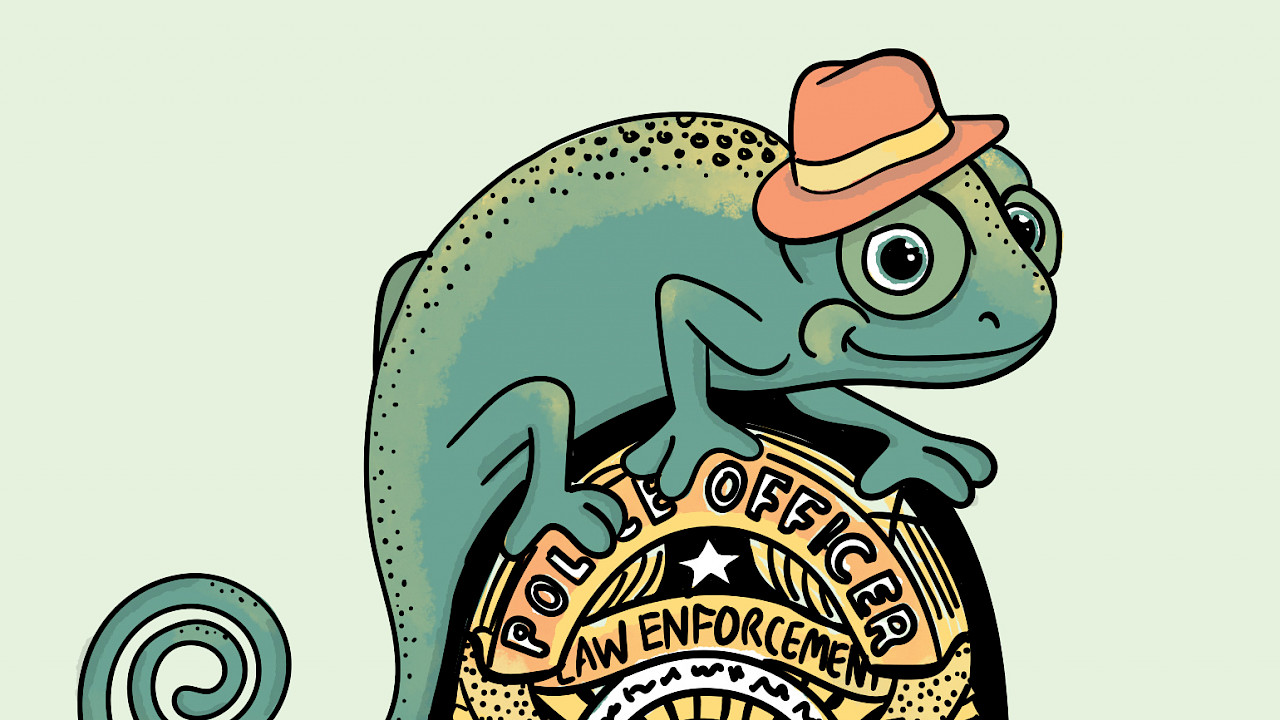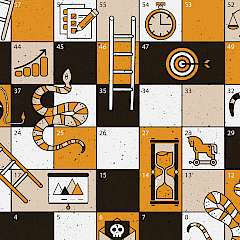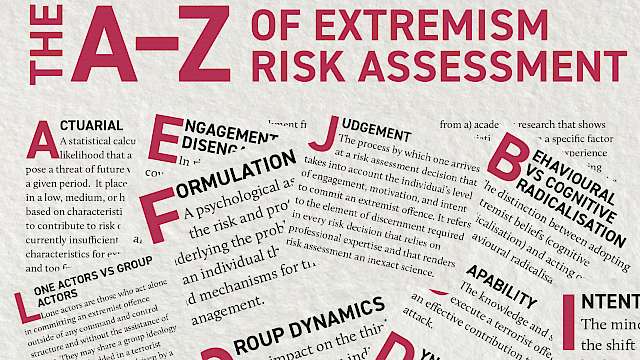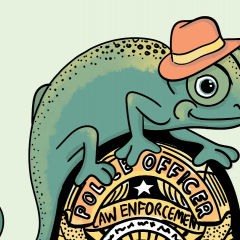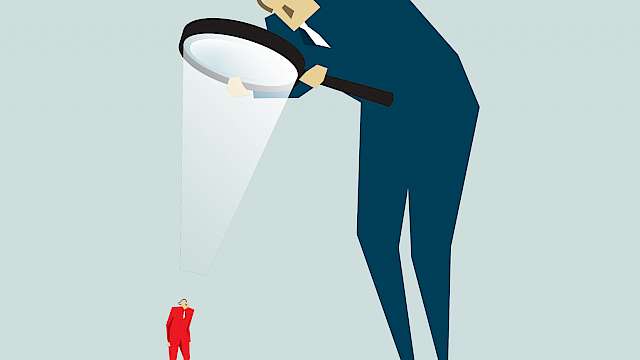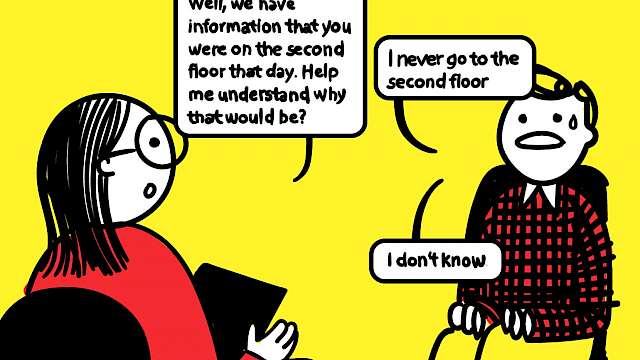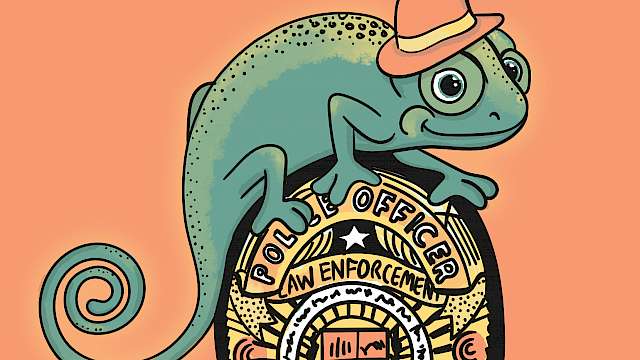In 2016 I was invited to observe two days of undercover training at the Los Angeles Police Department (LAPD). Before each training session, the undercover agents were provided with specific tasks to accomplish and then placed in various situations that demanded them to deal with awkward people while attempting to accomplish their objectives.
To say the least, I was impressed with the creativity and design of the complex social interactions that the undercover agents were trained to deal with. And, although a variety of behaviours were assessed for each scenario, in my view, one overarching behaviour stuck out across all scenarios: their ability to adapt.
The importance of adaptability
When faced with novel or uncertain situations, the ability to adjust behaviour appropriately – the ability to adapt – is an invaluable skill. Adaptability is a central part of naturalistic decision-making and has been praised as a necessary condition of expertise.
However, despite extensive conceptual work on adaptability, no behavioural measure exists to evaluate the efficacy of adaptive responses.
So, what is adaptive behaviour? How can it be measured? And how do we determine its effectiveness? These questions consumed me for the next four years and inspired my colleagues and me to develop a novel experimental set-up for assessing and measuring adaptive behaviour.
The set-up
In its most simple form, the set-up plays with three key features: an objective, an expectation, and a violation of that expectation.
Specifically, participants take on the role of an undercover agent who has to complete three mission objectives during a covert operation (e.g. collect the fingerprints of a study advisor). Importantly, the objectives cannot be changed or disengaged.
Participants take on the role of an undercover agent who has to complete three mission objectives during a covert operation
To give the agents an expectation, they receive a brief casefile before each mission providing some background information on the upcoming situation (e.g. a meeting has been arranged with the advisor and the agent has been tasked with collecting the advisor’s fingerprints by making the advisor hold a paper with the agent’s grades).
However, during each mission, the agent faces a social encounter that is inherently different from what has been described (e.g. new health rules require the advisor to wear gloves when holding received items). Hence, this expectancy violation creates a novel or unexpected situation that requires agents to adjust their behaviour (i.e. adapt to the situation) if they are to attain the mission objective.
Measuring adaptability
Having developed the experimental set-up designed to elicit adaptive behaviour, we needed a behavioural measurement of adaptability. However, to the best of our knowledge, one didn’t exist. To overcome this, we drew on the theoretical definition of adaptability to explore several behavioural indicators that might be relevant.
Specifically, we examined how quickly agents make their first adjustment (adjustment onset) and how many times they adjust their behaviour (number of adjustments), on the assumption that both these measurements tap into the ability to generate alternative behaviours to adapt to a situation.
We also measured the average time spent on a specific strategy or behaviour (adjustment perseverance), on the assumption that spending too much time on an ineffective strategy is maladaptive. It may, for example, be reflective of decision inertia or an inability to generate alternative avenues of action.
We now had an experimental paradigm to elicit adaptive responses and a behavioural measure of the adaptive response. However, what we didn’t know was whether adaptive responses aided in goal achievement.
The final piece of the puzzle
To complete the puzzle, we recruited a sample of ‘granters’ who were free to decide whether to grant or deny the agents’ requests. Specifically, the granters were told they were to take part in a study examining new employees at the university (e.g. to consult other students on what courses to take next semester).
Importantly, what the granters didn’t know was that their tasks were matched with the agents’ missions (i.e. the granters were requested to wear gloves when receiving objects and items to reduce the spread of viruses). This allowed us to influence granters to unknowingly stand between the agent and the agent’s mission objective.
With this experimental set-up, we ran our first study, in which mock undercover agents faced novel and unexpected situational demands while attempting to accomplish their mission objectives. The agents’ behavioural adaptability was measured as adjustments made in response to their changing situational demands, and the adaptability scale was used to complement this with a self-rated measure of adaptability.
However, one question remained: How might we estimate the practical value of the possible findings? To address this, we invited police officers experienced with covert policing to observe videos of the mock agents and assess their performance.
What did we learn?
The experimental set-up successfully elicited adaptive behaviour as the agents were goal-oriented, perceived the missions to demand adaptive responses (rather than resilient or coping responses), and reported a need to adjust their behaviour to achieve their objectives. Moreover, adaptability was measured from three different perspectives – agents, granters, and observers – and each perspective provided unique insights.
From the agents’ perspective, the findings suggest that self-rated adaptability might be important when facing novel and uncertain events, but that rating oneself as adaptable was associated with a less positive relationship with those the agent interacts with.
More specifically, from the granters’ perspective, agents who rated themselves as adaptive tended to be perceived as lacking in benevolence (a feature of trustworthiness), suggesting that they may have come across as self-serving. Moreover, agents who succeeded in attaining mission objectives were rated as more able (another feature of trustworthiness) and more competent at developing rapport.
Adaptability (rated on the adaptability scale) is strongly connected with agents’ trustworthiness and rapport
From the observers’ perspective, adaptability (rated on the adaptability scale) is strongly connected with agents’ trustworthiness and rapport and all three features are considered when predicting agents’ success in accomplishing mission objectives. We interpret this finding as indicating that practitioners with covert experience deem that adaptability might not be functional without having established a positive relationship.
We also found initial evidence that behavioural adjustments might be a promising avenue for measuring behavioural adaptability. One of these measures – spending less time on each adjustment – showed a positive relationship with accomplishing mission objectives. This suggests that it might be valuable to consider the time that agents spend on each adjustment when assessing goal-oriented behaviour in novel and unexpected situations.
Conclusions
Although this study was a first explorative attempt to study behavioural adaptability, we tentatively suggest three preliminary conclusions:
- Providing agents with a specific instrumental objective (e.g. collect the fingerprints of a study advisor) may lead to adaptive behaviour associated with a reduced relationship with those they interact with.
- Practitioners seem to consider adaptability as being more a feature connected with the quality of the relationship than a feature for accomplishing mission objectives.
- Practitioners should – but do not – take the time spent on each adjustment into account when assessing adaptability in novel and uncertain situations.
We believe that our development of the experimental paradigm to examine adaptability in a law enforcement context is a useful contribution of this research. By altering mission specifics within the schematic set-up of an objective, an expectation, and its violation, researchers should be able to examine an array of situations relevant to law enforcement contexts.
Read more
- Klein, G., Klein, H. A., Lande, B., Borders, J., & Whitaker, J. C. (2014). The Good Stranger frame for police and military activities. Proceedings of the Human Factors and Ergonomics Society Annual Meeting (Vol. 58, No. 1, pp. 275–279). Los Angeles, CA: SAGE Publications
- Martin, A. J. (2017). Adaptability – what it is and what it is not: Comment on Chandra and Leong (2016). American Psychologist, 72, 696–698
- Martin, A. J., Nejad, H., Colmar, S., & Liem, G. A. D. (2012). Adaptability: Conceptual and empirical perspectives on responses to change, novelty and uncertainty. Australian Journal of Guidance and Counselling, 22, 58–81
- Martin, A. J., Nejad, H. G., Colmar, S., & Liem, G. A. D. (2013). Adaptability: How students’ responses to uncertainty and novelty predict their academic and non-academic outcomes. Journal of Educational Psychology, 105, 728–746
- Ward, P., Gore, J., Hutton, R., Conway, G. E., & Hoffman, R. R. (2018). Adaptive skill as the conditio sine qua non of expertise. Journal of applied research in memory and cognition, 7, 35–50
Copyright Information
As part of CREST’s commitment to open access research, this text is available under a Creative Commons BY-NC-SA 4.0 licence. Please refer to our Copyright page for full details.
IMAGE CREDITS: Copyright ©2024 R. Stevens / CREST (CC BY-SA 4.0)
